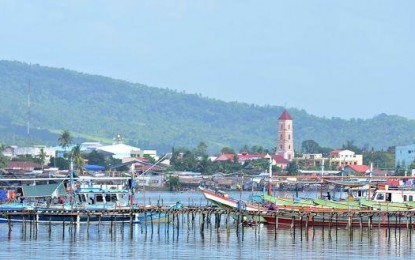
RED TIDE. The Cancabato Bay in Tacloban City in this undated photo. Six weeks after it was declared free from red tide, the phenomenon has recurred in Cancabato Bay, the Bureau of Fisheries and Aquatic Resources reported on Tuesday (Aug. 10, 2021). (Photo courtesy of Noel Castillo)
TACLOBAN CITY – Red tide phenomenon has recurred in Cancabato Bay in this city while toxins remain in five other bays in the region this week, the Bureau of Fisheries and Aquatic Resources (BFAR) reported on Tuesday.
BFAR Regional Director Juan Albaladejo said runoff of pollutants to waterways has contributed to the recurrence of red tide in Cancabato Bay, a rich source of cockle clams being shipped to Taiwan and Hong Kong.
“Pollutants that are fed to river systems to siltation of inner bay make it prone to red tide events as the cyst of the microorganism just hibernate in Cancabato with previous red tide occurrence and just waiting for a conducive condition to bloom. This is further aggravated by climate change,” Albaladejo told the Philippine News Agency (PNA).
Red tide recurred in Cancabato Bay just a few weeks after it was declared free from red tide on June 25, according to BFAR.
The BFAR Eastern Visayas regional marine biotoxin laboratory in this city found the sea waters of Cancabato to be positive of Pyrodinium Bahamense, a toxic microorganism causing paralytic shellfish poisoning (PSP).
Aside from Cancabato Bay, red tide alert is also up in Carigara Bay in Babatngon, San Miguel, Barugo, Carigara, and Capoocan in Leyte; San Pedro Bay in Basey, Samar; Matarinao Bay in the towns of General MacArthur, Hernani, Quinapondan, and Salcedo in Eastern Samar; and coastal waters Guiuan, Eastern Samar.
The recurrence of red tide in the area prompted BFAR to step up its monitoring in other bays for the possible spread of red tide.
Fish, squid, crab, and shrimp gathered from these areas are safe to eat provided that all entrails are removed and washed thoroughly with running water before cooking.
BFAR asked local government units to heighten their watch against gathering, trading, and consumption of shellfish to prevent the incidence of PSP.
PSP occurs from ingesting bivalve shellfish (such as mussels, oysters, and clams) that contain red tide toxins.
Red tide is a term used to describe a phenomenon where the water is discolored by high algal biomass or the concentration of algae. (PNA)
